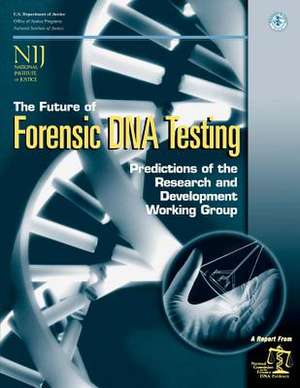The Future of Forensic DNA Testing
Autor U. S. Department Of Justice, Programs, Office of Justice, National Institute of Justiceen Limba Engleză Paperback
Preț: 92.85 lei
Nou
Puncte Express: 139
Preț estimativ în valută:
17.77€ • 18.60$ • 14.70£
17.77€ • 18.60$ • 14.70£
Carte disponibilă
Livrare economică 15-29 martie
Preluare comenzi: 021 569.72.76
Specificații
ISBN-13: 9781478268291
ISBN-10: 1478268298
Pagini: 98
Dimensiuni: 216 x 279 x 5 mm
Greutate: 0.25 kg
Editura: CREATESPACE
ISBN-10: 1478268298
Pagini: 98
Dimensiuni: 216 x 279 x 5 mm
Greutate: 0.25 kg
Editura: CREATESPACE
